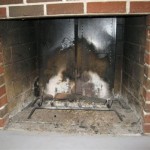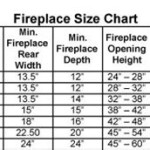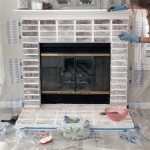Why Does My Fireplace Have 2 Vents?
Fireplaces, traditionally a source of warmth and ambiance, can sometimes present operational features that seem perplexing to homeowners. One such feature is the presence of two vents, which can raise questions about their purpose and functionality. Understanding the reason behind multiple vents in a fireplace necessitates examining the various fireplace designs and their respective venting requirements. This article will explore the common reasons for the dual venting system found in some fireplaces. It will also provide an overview of different fireplace types and how their ventilation strategies may differ.
The most common reason for a fireplace having two vents is related to the efficient combustion of fuel and the safe expulsion of exhaust gases. Modern fireplaces, especially those designed for increased energy efficiency or employing specific fuel types, often require meticulous control over airflow. The presence of two vents may indicate a dedicated intake for fresh air and a separate exhaust vent for the products of combustion. This separation aims to optimize the burning process and minimize the potential for backdrafting, which can introduce harmful gases into the living space.
Another reason for the presence of multiple vents relates to the design and components of the fireplace itself. Some fireplaces feature a firebox surrounded by a metal jacket that circulates air. One vent might draw cool air from the room, which is then heated by the firebox and expelled back into the room through the second vent. This convective heating process can significantly improve the fireplace's efficiency in distributing warmth throughout the space. In such cases, the two vents are crucial components of the fireplace's heat-circulation system.
Finally, the type of fuel used in the fireplace can also influence the venting configuration. Gas fireplaces, for instance, often require specific venting systems designed to handle the byproducts of gas combustion safely. A direct-vent gas fireplace, a common configuration, utilizes two vents: one to draw in outside air for combustion and another to exhaust combustion gases directly outside. This sealed system prevents indoor air from being used for combustion, further enhancing efficiency and safety.
Understanding Fireplace Ventilation Principles
Fireplace ventilation is fundamental to a fireplace's safe and efficient operation. The primary goal of any fireplace venting system is to remove harmful combustion byproducts, such as carbon monoxide, from the living space. Proper ventilation also ensures an adequate supply of oxygen for combustion, allowing the fire to burn cleanly and efficiently. When a fireplace lacks sufficient ventilation, it can result in incomplete combustion, leading to the production of excessive smoke, soot, and dangerous levels of carbon monoxide.
The principle of natural draft plays a significant role in many fireplace venting systems. Natural draft relies on the buoyancy of hot gases to create an upward flow through the chimney or vent. As the hot gases rise, they draw in fresh air at the base of the fireplace, creating a continuous cycle of air movement. However, factors such as chimney height, flue diameter, and external weather conditions can affect the strength of the natural draft. In some cases, mechanical means, such as exhaust fans, might be necessary to augment the natural draft and ensure proper ventilation.
Ventilation systems are carefully designed based on the fireplace's design and fuel type. Wood-burning fireplaces typically rely on a single, large chimney to exhaust combustion gases. Gas fireplaces, on the other hand, often utilize more specialized venting systems to handle the specific characteristics of gas combustion. These systems can range from simple B-vent configurations to more complex direct-vent systems. It is imperative to adhere to the manufacturer's specifications and local building codes when installing or modifying a fireplace venting system to ensure safe and efficient operation.
Types of Fireplaces and Their Venting Requirements
The design and construction of a fireplace heavily influence its venting requirements. Different types of fireplaces utilize various venting strategies to ensure safe and efficient operation. Understanding the distinctions between these fireplace types is crucial for comprehending the purpose behind multiple vents.
Traditional masonry fireplaces, built from brick or stone, typically feature a large, single chimney to exhaust combustion gases. These fireplaces rely on natural draft to create an upward flow of air through the chimney. The flue diameter and chimney height are carefully calculated to ensure adequate ventilation. These systems generally do not have two vents, as their design presumes a single exhaust pathway.
Factory-built fireplaces, also known as prefabricated fireplaces, are manufactured in a factory and installed as a complete unit. These fireplaces often utilize a double-walled metal chimney system. While most of these models rely on a single chimney for exhaust, some designs incorporate an additional air intake vent to improve combustion efficiency. This intake can be integrated into the firebox or located separately near the fireplace. The design for this vent depends on the specific design and model.
Gas fireplaces, fueled by natural gas or propane, offer a variety of venting options. B-vent gas fireplaces utilize a single vent to exhaust combustion gases, similar to traditional wood-burning fireplaces. Direct-vent gas fireplaces, however, require two vents: one to draw in outside air for combustion and another to exhaust combustion gases directly outside. Vent-free gas fireplaces, as the name suggests, do not require any venting. However, these fireplaces are equipped with oxygen depletion sensors (ODS) to shut off the gas supply if oxygen levels in the room become too low. Vent-free fireplaces are subject to strict regulations and may not be permitted in all jurisdictions.
Dual Vent Configurations: Examining Specific Scenarios
While a single chimney or vent is the most common configuration for fireplaces, some specific scenarios may necessitate the use of two vents. Analyzing these scenarios provides further insight into the rationale behind dual venting systems.
In certain high-efficiency wood-burning fireplaces, a dedicated fresh air intake vent is employed to supply combustion air directly to the firebox. This helps to prevent the fireplace from drawing air from the rest of the house, which can lead to drafts and energy loss. The fresh air intake vent also ensures a consistent supply of oxygen for combustion, resulting in a cleaner and more efficient burn. This is often used where residences are sealed tightly, such as a modern building with a high insulation value.
Some gas fireplaces, particularly those designed for larger spaces or higher heat output, may utilize a dual-vent system to optimize combustion and heat distribution. One vent serves as the primary exhaust vent, while the second vent may be used to circulate heated air throughout the room. This configuration is designed to improve the fireplace's overall efficiency and effectiveness. The exact configuration will depend on the specific manufacturer’s design.
In specific installations involving existing chimneys or limited space, a dual-vent system may be used to adapt the fireplace to the available venting infrastructure. For example, a gas fireplace may be installed using an existing chimney, with one vent used for exhaust and the other used to draw in fresh air. This approach can simplify installation and reduce the need for extensive modifications to the building structure. This dual vent system will also require careful inspection and may necessitate professional installation.
Ultimately, the presence of two vents on a fireplace is not inherently problematic. However, it is essential to understand the purpose of each vent and to ensure that the entire venting system is properly installed and maintained. Consulting with a qualified fireplace professional is recommended to address any concerns or questions regarding the functionality and safety of a fireplace venting system.

Unraveling The Mystery Behind Dual Lever Fireplaces
Gas Fireplace Venting Explained Heat Glo
What Is This Vent Above My Firebox Hearth Com Forums Home
Gas Fireplace Venting Explained Heatilator
Remove Or Cover Up Old Heatilator Vents Hearth Com Forums Home
What Does The Other Lever On A Fireplace Do I Know There Is One That Opens And Closes Chimney But Purpose Of Another Quora

Unraveling The Mystery Behind Dual Lever Fireplaces
Gas Fireplace Venting Explained Heat Glo

Fireplace Cover To Keep Cold Air Out

Any Fireplace Experts Out There On Houzz Need Help With Ugly Vents
Related Posts








